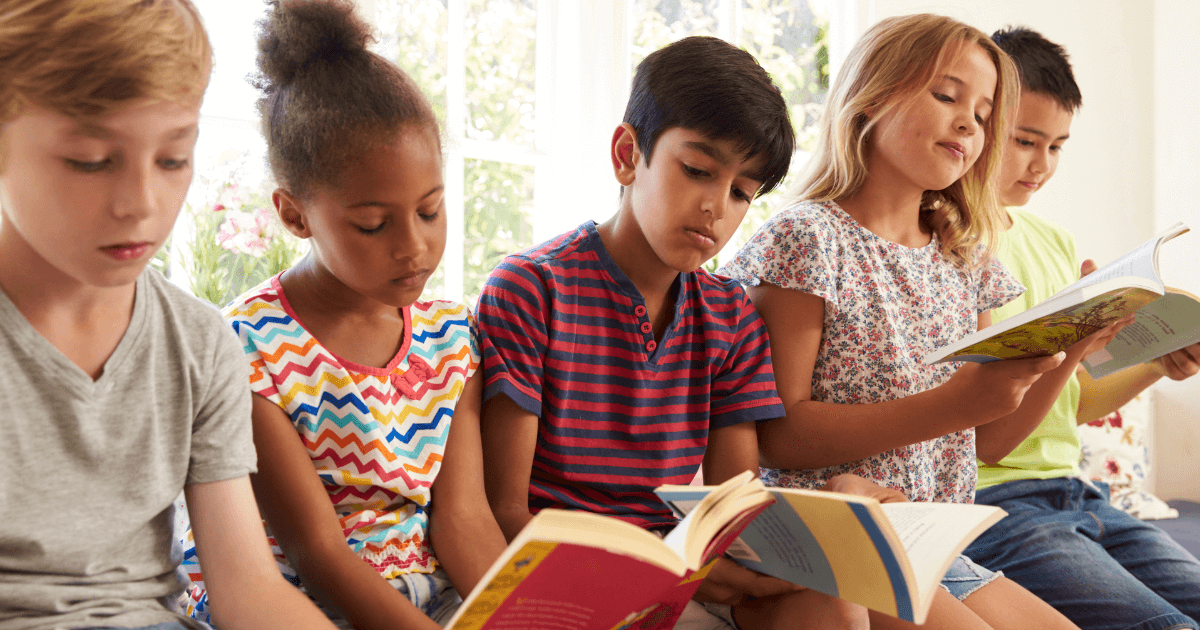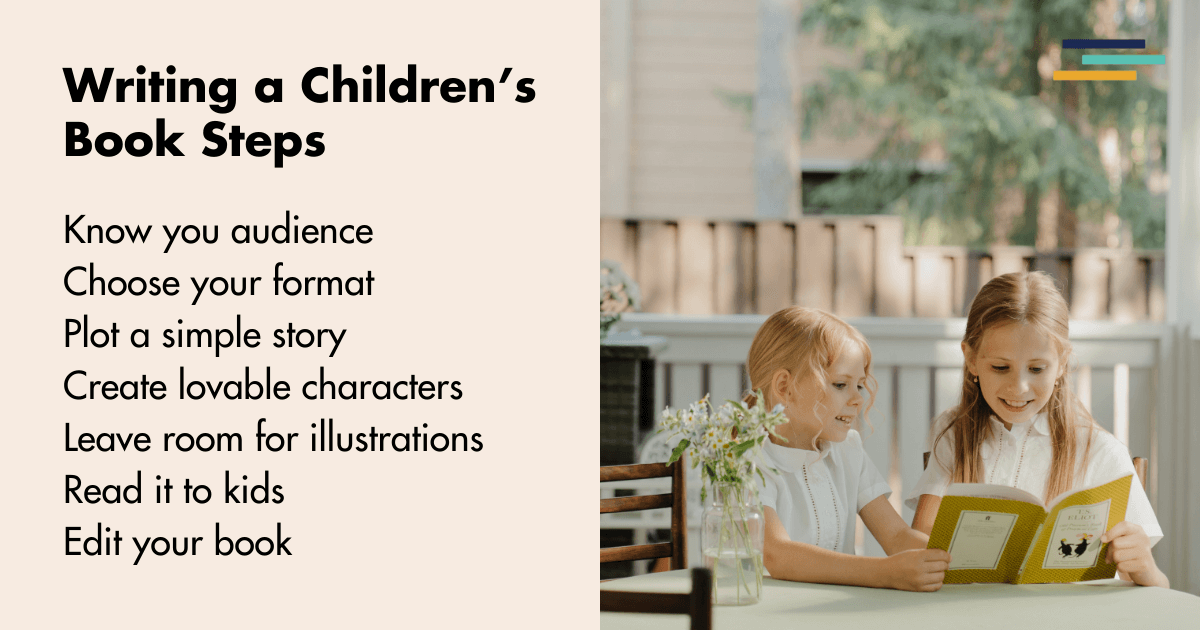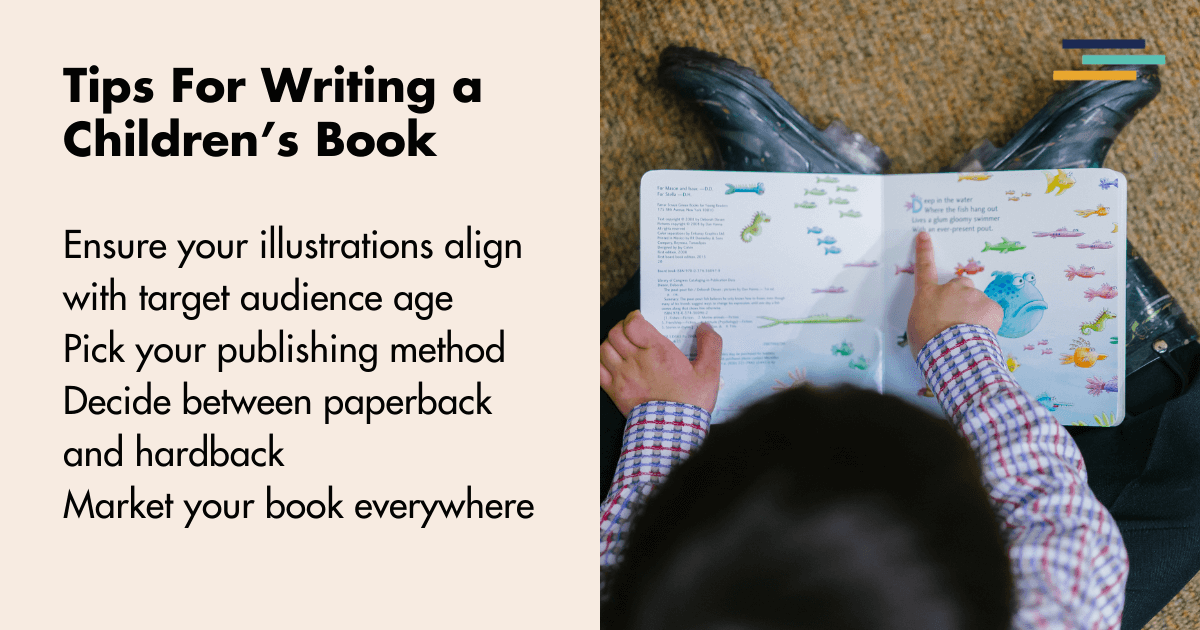
Do you have a head full of whimsical ideas, a heart bursting with stories, and maybe a drawer full of half-eaten crayons? Congratulations! You’re halfway to becoming a children’s book author. Now, if only you knew what to do with all that creative chaos, right?
Well, hop on the big yellow bus of imagination, because we’re about to take a field trip through the colorful world of writing children’s literature! By the time we’re done, you’ll be armed with everything you need to transform your brilliant idea into a bona fide children’s book.
How to Start a Children’s Book
First things first: you need a spark. An idea. A little firefly of inspiration that’ll light up your brain like a jar full of magic. But where do these elusive idea-fireflies come from, you ask? Well, they’re hiding everywhere! In that weird-looking cloud that resembles your Aunt Mildred’s hairdo. In the way your dog tilts his head when you say “walkies.” Even in that piece of broccoli on your plate that’s totally giving you the stink eye.
The key is to embrace your inner child. You know, that part of you that still giggles at the word “underpants” and thinks mud puddles are nature’s trampoline. Dust off that imagination of yours and let it run wild. No idea is too silly, too wacky, or too out-there. Remember, we’re talking about a world where cats wear hats. The sky’s the limit!
How to Start a Children’s Book Examples
Let’s kick things off with a good old-fashioned brainstorming session. This is where you get to unleash your inner child and let your imagination run wild. Remember, there’s no such thing as a bad idea at this stage. Jot down everything that pops into your head, no matter how silly or outlandish it might seem.
Here are some brainstorming ideas to get your wheels turning.
The Accidental Adventure of Lefty the Left Sock: One day, Lefty woke up to find his best friend, Righty, was missing. Determined to find him, Lefty rolls off the bed and tumbles into a world of dust bunnies, lost toys, and the terrifying Vacuum Monster.
Cloudy with a Chance of Friendship: Meet Cumulus, the loneliest cloud in the sky. All he wants is a friend, but every time he tries to hug another cloud, it rains! Will Cumulus ever find a friend who doesn’t mind getting a little wet?
The Day the Crayons Went on Strike: When little Timmy opens his crayon box, he finds a bunch of angry notes instead of crayons. Blue is tired of coloring oceans, Green has had it with drawing trees, and Pink… well, Pink just wants to be used for something other than princesses!
See what I mean? These ideas are just the tip of the iceberg (which, by the way, could be another great story—The Iceberg Who Wanted to Be a Tropical Island).

Steps to Writing a Children’s Book
Step 1: Know Your Tiny Humans (aka Your Audience)
Writing for kids isn’t just about unleashing your inner goofball (though that’s a big part of it). It’s about understanding the tiny humans you’re writing for. Each age group has its own quirks, interests, and attention spans.
So, start with researching the typical traits of your target age group. What are their interests? What kind of language do they understand? What is their attention span? A book for a 3-year-old will be very different from one for a 10-year-old.
Step 2: Choose Your Format
This decision is crucial as it will shape how you present your story and how readers will interact with it. Are you aiming for the drooling, board-book-chewing crowd? The just-learning-to-read-and-still-eating-crayons gang? Or the sophisticated chapter-book aficionados who’ve graduated to eating actual food?
Board Books: If you’re writing for tiny humans who think books are a food group, board books are your jam. These sturdy books are perfect for the youngest readers (0-3 years). They typically have 10-20 pages with simple concepts and minimal text.
Picture Books: Aimed at ages 3-8, these books usually have 32 pages with text and illustrations on each spread. They can tell more complex stories but still rely heavily on visuals.
Early Readers: For kids just starting to read on their own (ages 5-7), these books have simple sentences, lots of repetition, and illustrations on every page. You want it to be simple enough to engage the kid, but interesting enough that it doesn’t drive parents bonkers on the 100th bedtime read.
Chapter Books: Designed for independent readers (ages 7-10), these books are where the kiddos are starting to stretch their literary legs a little bit. These books have more text, fewer illustrations, and are divided into short chapters.
Middle Grade Novels: For older children (ages 8-12), these books are longer, with fewer (if any) illustrations. Middle grade books are just right for kids who’ve outgrown picture books but aren’t quite ready for YA angst. You can tackle bigger themes and more complex plots, but keep it PG, folks.
Your choice of format will depend on your story’s complexity, your target age group, and your personal strengths as a writer or illustrator. Remember, each format has its own set of guidelines and expectations, so it’s worth researching your chosen format in depth before you start writing.
Step 3. Plot Your Story (But Keep It Simple, Silly!)
Now that you have your idea and know your audience, it’s time to plot your story. Children’s books may be simple, but even the simplest story should have a clear beginning, middle, and end. Introduce your characters and setting, present a problem or challenge, and wrap it up with a satisfying resolution.
And don’t forget about conflict! Every story needs a bit of tension, even if it’s just about sharing toys or overcoming a fear. This is what keeps your readers engaged and turning pages.
Step 4: Create Characters That Kids Will Love (or Love to Hate)
Characters are the heart of any story, and in children’s books, they need to be especially memorable and relatable. Create main characters that your readers can see themselves in. Give them flaws, fears, and dreams that kids can understand and empathize with.
But don’t forget the supporting characters! These folks—or animate objects—can really make a story shine. Whether it’s a loyal best friend or a mischievous antagonist, make sure they’re just as well-developed as your main character.
Step 5: Write the Thing
Now it’s time to put pen to paper (or fingers to keyboard, if that’s more your style). Remember, the first draft is all about getting your ideas out there, no matter how messy or muddled they might be. Just get it down.
Think of your first draft as a sandbox. Build castles, dig moats, make mud pies—just have fun with it! Don’t worry about perfection; that comes later. Right now, your job is to let your creativity flow like a river of chocolate in Willy Wonka’s factory.
Step 6: Leave Room for Illustrations
Your words should leave room for illustrations to shine. If you’re describing every detail of how the mischievous monkey looks, what’s left for the illustrator to do? Let the pictures tell part of the story too.
If you’re not illustrating yourself, provide clear art notes but don’t be too bossy. Illustrators are artists too, and they might have brilliant ideas you never thought of. And if you’re going the DIY route? Break out those crayons and channel your inner Picasso!
Step 7. Read It Aloud (and Listen to the Crickets or Giggles)
Gather some mini-humans (borrow some if you need to) and let ‘er rip!
Does your tongue trip over any words? Are there any awkward pauses? Reading aloud helps you catch clunky sentences and pacing issues. If you’re out of breath by the end of a sentence, it might be time for some pruning.
Watch your audience closely. Are they hanging on your every word, or are their eyes glazing over faster than a donut? Kids are the world’s most honest critics. If they’re giggling, you’re golden. If they’re fidgeting… well, back to the drawing board!
Step 8. Polish Until It Shines Like a Unicorn’s Horn
You’re in the home stretch now! Time to make your manuscript sparkle. Put on your editor’s hat (I recommend a sparkly wizard hat for this). This is where you shape your story, tighten your prose, and make sure every word earns its place.
Go through your story with a fine-toothed comb (or a unicorn’s mane-brush, if you prefer). Cut the fluff, polish the rough spots, and make your story shine brighter than a dragon’s treasure hoard. Is that adjective really necessary? Could that sentence be punchier? Remember, in kids’ books, less is often more.
Step 9: Share Your Masterpiece with some Discerning Adults
Share your story with other writers, parents, teachers, and librarians. Listen to their feedback with an open mind. You don’t have to take every suggestion, but if multiple people are stumbling over the same part, it might be worth a second look.
Why You Should Start Writing a Children’s Book
Still on the fence about diving into the wonderland of children’s literature? Let me give you a gentle nudge (or a playful shove) towards your destiny as a kid-lit superstar!
Unleash Your Creativity
Remember that wild and wacky imagination of yours that’s been locked up in the attic of adulthood? It’s time to set it free! Writing children’s books is like having an all-access pass to the playground of your mind. Want to create a world where pizza grows on trees? Go for it! A story about a sneaky shadow that steals socks? Why not! The only limit is your imagination.
Make a Difference in Young Lives
Imagine a child all cuddled up with your book, lost in the world you’ve created. Your words can spark a child’s imagination, teaching them valuable lessons, or simply making them giggle uncontrollably. Books have the power to shape young minds, instill a love for reading, and even help kids navigate the tricky waters of growing up. By writing a children’s book, you’re not just telling a story—you’re potentially changing lives, one bedtime read at a time.
Leave a Lasting Legacy
Long after we’ve hung up our adult-ing shoes, our stories can live on. Think about it: “The Cat in the Hat” is still causing mischief, and “Where the Wild Things Are” is still sending kids on wild rumpuses decades after they were written. Your book could be the one that kids remember fondly when they’re all grown up, the one they can’t wait to share with their own little ones. Now that’s what I call leaving your mark on the world!
Potential for Fun and Profit
Let’s face it—writing children’s books is just plain fun. It’s a chance to play with words, invent silly characters, and basically be a big kid again. But wait, there’s more! If your book takes off, you could be looking at the kind of profit that buys a lot of ice cream (or pays the bills, if you’re into that sort of thing). From book sales to school visits to merchandise, a successful children’s book can open up a whole new world of opportunities.

Tips For How to Create a Children’s Book
You’ve crafted a story that’s sure to delight young readers and drive parents to the brink of insanity with repeated readings. But the journey isn’t over yet. Here are some tips to help you navigate the wild and wacky world of children’s book creation and publication.
Navigate the Wild World of Publishing
First you have to make a choice: traditional publishing or self-publishing?
Traditional publishing is like trying to get into an exclusive treehouse club. You’ll need a secret password (a great manuscript), and you might face a few rejections before you’re allowed in. But once you’re in, you’ve got a whole team to help you build your treehouse and tell everyone about it.
Self-publishing, on the other hand, is like building your own treehouse from scratch. You have complete control over every nail and board, but you also have to do all the hammering yourself (and convince the neighborhood kids to come play in it).
Both paths can lead to success. Choose the one that fits your goals, skills, and tolerance for papercuts.
Print and Production Pointers
If you’re self-publishing, the next step is to turn your masterpiece into an actual, physical book. Exciting!
Remember when we talked about book formats earlier? Your choice will affect everything from the type of paper used to the binding method. The paper you choose can make a big difference. Thicker paper stands up better to repeated readings (and the occasional juice spill), while thinner paper keeps costs down. Glossy pages make colors pop but can be prone to glare.
As for binding, you’ve got options. Hardcover books are durable and look great on a shelf, but they’re more expensive. Paperbacks are budget-friendly but might not survive as many “love-readings.” Board books are practically indestructible—perfect for your tiniest fans.
And don’t forget about e-books! They’re great for tech-savvy kids and parents who don’t want to lug a whole library on vacation. Plus, you can add fun features like read-aloud narration or simple animations.
Apps take things a step further. Imagine your book, but interactive! Kids can tap the cow to make it moo or drag and drop characters into new scenes. Even paper books can get in on the interactive action. Think lift-the-flap reveals, textured pages for sensory exploration, or even scratch-and-sniff elements (stinky cheese scene, anyone?). These features can make your book more engaging and memorable.
But here’s a little secret: one of the best interactive elements is a good story. If you can get kids to use their imagination, ask questions, and relate to the characters, you’ve created something truly interactive—no fancy features required.
Market Your Book Like a Boss (in Footie Pajamas)
You’ve written a great book, but now you need to tell the world about it. Time to put on your marketing hat (may we suggest a propeller beanie?).
Start by building an author platform. This is like your own personal stage to shout from. Start a website, blog about your writing journey, or create a newsletter. The goal is to connect with your audience—both the tiny humans who’ll read your books and the bigger humans who’ll buy them.
In terms of connecting with your reading audience, try doing some school visits. There’s nothing quite like seeing a room full of kids hanging on your every word. Plus, it’s excellent market research. If you can keep a classroom of third-graders entertained, you know you’re onto something good. Share behind-the-scenes peeks at your writing process, do live readings, or host Q&A sessions. Just remember to keep it kid-friendly—no spoilers about Santa or the Tooth Fairy!
Conclusion
In the end, writing a children’s book is a magical journey that combines creativity, perseverance, and a touch of whimsy. Whether you’re crafting a simple board book or an engaging chapter book, remember that your words have the power to spark imagination, teach valuable lessons, and create lasting memories for young readers.
So grab your thinking cap (or that glittery tiara), let your imagination soar, and start weaving your own literary spell. Who knows? Your story might just become the next bedtime favorite, cherished by children and adults alike for generations to come. Now, off you go—there’s a world of wonder waiting for you to bring it to life!


